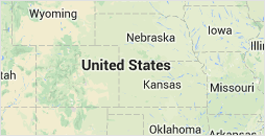Jeson Clarke
PHONE NUMBER : ------
Map

What are Columbariums?
When it comes to honoring a loved one after cremation, families are often faced with a range of options. One increasingly popular choice is a columbarium, a respectful and lasting way to preserve ashes while offering a place for reflection and remembrance.
A Peaceful Resting Place
A columbarium is a structure, often found within a cemetery, church or memorial park, designed specifically to hold urns containing cremated remains. These structures contain niches, small compartments that are sealed and often marked with a nameplate, photo or short message. Some are indoors, offering shelter and tranquility, while others are part of outdoor memorial gardens surrounded by nature.
For many families, columbariums offer the best of both worlds: a permanent, dignified location without the higher cost or land use of a traditional burial. It allows loved ones to visit, leave flowers and feel a sense of connection, just as they would with a gravesite.
A Practical Alternative to Scattering
While scattering ashes can be meaningful and symbolic, there are often concerns about legality and long-term accessibility. Many families consult laws for scattering ashes to ensure they comply with regional regulations, especially when considering public parks, private land or bodies of water.
Choosing a columbarium sidesteps those concerns entirely. It provides a secure, regulated resting place where families don’t have to worry about future access or legal restrictions. Still, some families do both, scattering some ashes while placing the rest in a niche for ongoing remembrance.
A Choice Rooted in Love
Ultimately, deciding what to do with a loved one’s ashes is about honoring their memory in a way that brings peace. Whether you’re navigating the laws for scattering ashes or exploring options like columbariums, it’s about creating a space, physical or symbolic, that keeps their spirit close.
In moments of loss, finding a place to remember can bring comfort. A columbarium offers exactly that: a gentle, enduring tribute.
Author Resource:-
Jeson Clarke writes about cremation and funeral services, offering compassionate guidance for end-of-life planning. You can find his thoughts at ashes interment blog.
